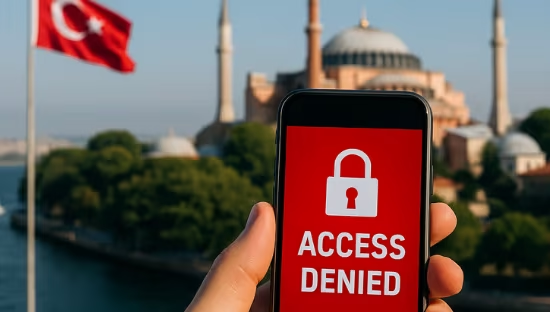
Decline in Voice Roaming Traffic: What’s Really Going On?
Have you noticed you hardly use roaming voice minutes anymore when traveling? That’s not just in your head—it’s a global trend. Since around 2019, retail voice roaming traffic—those billable minutes from your phone company—has been gradually declining. And yes, apps like WhatsApp, Viber, and FaceTime are a huge part of the story.
But there’s more—eSIM technology is shaking things up too. New ways to connect, pay, and talk abroad are changing the roaming game again.
Let’s break it all down.
A Deep Dive Into the Data
1. International carrier voice is slipping:
- International voice traffic dropped by 6.2% in 2019, then another 7.2% in 2020, and continued declining into 2022 and 2023.
- TeleGeography notes wholesale international minutes fell by 4% in 2018, 6.2% in 2019, and 7.2% in 2020.
2. OTT voice dwarfs traditional roaming:
- In 2019, OTT voice traffic hit 1 trillion minutes, while carrier voice managed just 432 billion minutes.
- Paul Brodsky from TeleGeography said:
“International carrier voice revenue is being directly impacted by free OTT services and changing user behaviors… social calling has replaced business communications as the primary driver…”
3. VoIP substitution is crushing revenue:
- In 2012, global international voice revenue peaked at US $99B, but by 2019 it had dropped to $60B, with projections to fall to $50B by 2024.
- TeleGeography and Capacity Media both forecast declining trends of 2–15% per year.
Why Is This Happening?
Data-centric messaging
Smartphone proliferation + faster, cheaper data = perfect storm. People naturally shift to OTT services (WhatsApp, WeChat, etc.) that let them voice/video chat with just Wi‑Fi or mobile data—far cheaper than carrier roaming.
“Roam Like At Home” in the EU
The EU abolished roaming fees in June 2017, making it part of domestic plans. Result? Data usage went through the roof and voice roaming flattened—people got connected without thinking about voice minutes.
Pandemic pause (+weird rebound)
COVID lockdowns caused a short-lived spike in roaming traffic early in 2020, but volumes plunged right after. Steady declines also came from fixed voice and SMS, while data surged.
The eSIM Twist
Enter eSIM—a digital SIM that you download onto your phone. No physical swapping. Here’s why it matters:
Instant and affordable connectivity
- Travel eSIMs let you pick up local data plans in 200+ countries via apps—at up to 35% savings versus carrier roaming.
- GSMA Intelligence reports 50% consumer awareness of eSIM; of those, 19% use it, and over half used it while traveling.
Roaming revenue at risk
- Traditional telcos may lose $3.9B by 2028 to travel eSIM services like Holafly and Airalo.
- Juniper Research predicts 1.5B eSIM smartphones in 2024 and 3.5B by 2027, pushing travelers to bypass telco roaming.
Telcos pivot or perish
- Operators are launching their own travel eSIM products, bundling apps, and digital plans to compete with third-party eSIMs.
- Partnerships with eSIM providers, digital onboarding platforms, and seamless eSIM provisioning are essential strategies.
So What Does This All Mean?
- Voice roaming is disappearing
Massive drop in minutes and revenue—consumers are switching to apps and data-centric services. - Data is gold
From RLAH data surges to OTT dominance, carriers should pivot to selling data roaming and digital plans—not voice minutes. - eSIM accelerates disruption
Travelers now have easy, flexible, and cheaper connectivity options that sidestep telco roaming entirely. - Telcos must evolve
Build branded travel eSIM services, enhance customer experience via apps, and offer hybrid bundles (voice + data + app integration).
Some Graphics to Drive the Story
1. Timeline Line Chart
- EU voice roaming minutes’ declined since 2019.
- Overlay data usage growth from RLAH.
2. Pie Chart: 2019 Voice Minutes
- OTT: 1 T minutes vs Carrier: 432 B minutes.
3. Bar Graph: Voice Roaming Revenue
- 2012 – $99B
- 2019 – $60B
- Projected 2024 – $50B
4. eSIM Adoption Funnel
- Consumer awareness → usage → travel usage → projected smartphones.
5. eSIM vs Telco Roaming Cost Comparison
- Show 35% savings and ease of activation.
Write Like You’re Chatting With a Friend
“Last summer I landed in Rome, plugged in an eSIM, and my roaming bill was zero—even though I was WhatsApp-calling daily. The funny thing? My carrier didn’t register any voice roaming—even though I spoke nonstop!”
Then drop some stats:
“That’s not just me. Global retail voice roaming has dropped 6% in 2019 and even more in 2020–2023. And OTT apps logged 1 trillion minutes in 2019—more than double what telcos did that year
Final Takeaway about the decline in voice roaming traffic
The era of roaming voice minutes is fading fast—OTT apps and eSIM are the new normal. Telcos that don’t adapt risk losing huge chunks of revenue. But there’s opportunity too: by embracing digital tools, selling data-first bundles, and even becoming their own eSIM travel providers, they can stay relevant in a rapidly evolving world.










